-
Improve trace detection of explosives by sniffing like a dog
By mimicking how dogs get their whiffs, a team of government and university researchers have demonstrated that “active sniffing” can improve by more than ten times the performance of current technologies that rely on continuous suction to detect trace amounts of explosives and other contraband.
-
-
Nanobionic spinach plants can detect explosives
Spinach is no longer just a superfood: By embedding leaves with carbon nanotubes, MIT engineers have transformed spinach plants into sensors that can detect explosives and wirelessly relay that information to a handheld device similar to a smartphone. This is one of the first demonstrations of engineering electronic systems into plants, an approach that the researchers call “plant nanobionics.”
-
-
Countering enemy IEDs in culverts
Culverts are creeks or streams that run under roads to prevent flooding, and that terrorists often use these areas to kill soldiers. The Joint Improvised-threat Defeat Agency (JIDA) challenge, held 13-21 September at Fort Benning, tested industry vendor equipment from around the United States in order to counter enemy improvised explosive devices (IEDs) in culverts.
-
-
X-ray vision: Bomb technicians strengthen their hand with Sandia’s XTK software
X-Ray Toolkit (XTK), an image-processing and analysis software developed at Sandia National Laboratories, has been adopted by the military and emergency response communities in the United States and around he world. “XTK is the standard in the field not only nationally, but internationally. It made the average bomb tech a better bomb tech,” said Craig Greene, a special agent and bomb technician at the Albuquerque, New Mexico FBI. “In the past twenty years, the bomb technician community has progressed from the Stone Age to the twenty-first century in terms of equipment and procedures, and XTK is a major part of that progression.”
-
-
Super-sniffer mice detect land mines, decode human olfactory system
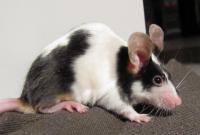
Researchers have created super-sniffer mice that have an increased ability to detect a specific odor. The mice, which can be tuned to have different levels of sensitivity to any smell by using mouse or human odor receptors, could be used as land-mine detectors or as the basis for novel disease sensors.
-
-
Can next-generation bomb ‘sniffing’ technology outdo dogs on explosives detection?
With each terrorist attack on another airport, train station, or other public space, the urgency to find new ways to detect bombs before they’re detonated ratchets up. What researchers have wanted to develop for a long time is a new chemical detection technology that could “sniff” for explosives vapor, much like a canine does. Many efforts over the years fell short as not being sensitive enough. My research team has been working on this problem for nearly two decades – and we’re making good headway. Inspired by the tremendous detection capabilities of dogs, we’ve made remarkable advances toward developing technology that can follow in their footsteps. Deploying vapor analysis for explosives can both enhance security levels and provide a less intrusive screening environment. Continuing research aims to hone the technology and lower its costs so it can be deployed at an airport near you.
-
-
Iraq to stop using fake bomb detectors in wake of Baghdad attack
In the wake of the deadliest terrorist attack in Iraq since 2003, Iraq’s prime minister Haider al-Abadi has instructed all the country’s security forces – the federal and local police and the army — to stop using fake bomb detectors at the hundreds of security checkpoints across the country. A British businessman, James McCormick, purchased thousands of the novelty golf ball finders for $19.95 each, repackaged them, and then sold them to Iraq and other nations as advanced hand-held bomb detectors. McCormick charged $40,000 for each of the repackaged golf-ball finders.
-
-
Speedy terahertz-based system could detect explosives
Terahertz spectroscopy, which uses the band of electromagnetic radiation between microwaves and infrared light, is a promising security technology because it can extract the spectroscopic “fingerprints” of a wide range of materials, including chemicals used in explosives. Spectroscopic system with chip-scale lasers cuts detection time from minutes to microseconds.
-
-
Coded apertures improves, shrinks mass spectrometers for field use

A modern twist on an old technology could soon help detect rogue methane leaks, hidden explosives, and much more. Mass spectrometers were invented in the 1930s, and they are still typically the size of an oven or refrigerator. Inherent hurdles to miniaturization have made it difficult to use them outside of a laboratory. Researchers are using software to dramatically improve the performance of chemical-sniffing mass spectrometers. With the help of modern data analytics, researchers have demonstrated a technology using a so-called “coded aperture” that promises to shrink these devices while maintaining their performance.
-
-
Sniffing out a dangerous vapor for detecting fuel leaks, fuel-based explosives
Alkane fuel is a key ingredient in combustible material such as gasoline, airplane fuel, oil — even a homemade bomb. Yet it is difficult to detect and there are no portable scanners available that can sniff out the odorless and colorless vapor. Engineers have developed a new type of fiber material for a handheld scanner that can detect small traces of alkane fuel vapor, a valuable advancement that could be an early-warning signal for leaks in an oil pipeline, an airliner, or for locating a terrorist’s explosive.
-
-
Suicide bomb detector moves close to commercialization with Sandia engineer’s help
On the chilling list of terrorist tactics, suicide bombing is at the top. Between 1981 and 2015, an estimated 5,000 such attacks occurred in more than 40 countries, killing about 50,000 people. The global rate grew from three a year in the 1980s to one a month in the 1990s to one a week from 2001 to 2003 to one a day from 2003 to 2015. R3 Technologies and a group of other small businesses are developing a way to prevent suicide attacks by detecting concealed bombs before they go off. R3 found a partner in Sandia sensor expert JR Russell who has helped bring the company’s Concealed Bomb Detector, or CBD-1000, close to commercialization over the past two years.
-
-
New sensor rivals dogs in detecting explosives
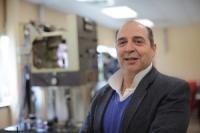
Dogs have been used for decades to sniff out explosives, but now a University of Rhode Island scientist and his team have come up with another way to detect bombs: sensors. The scientist has developed a sensor that can detect explosives commonly used by terrorists. One of these explosives is triacetone triperoxide, or TATP. Triacetone triperoxide has been used by terrorists worldwide, from the 2001 “shoe bomber” Richard Reid to the suicide bombers who attacked residents of Paris in November. The explosive is relatively easy to make with chemicals that can be bought at pharmacies and hardware stores, attracting little attention from authorities.
-
-
Seismologists "hear" the nuclear explosions in North Korea
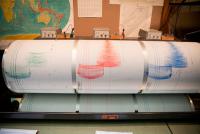
International experts are far from convinced that North Korea actually conducted its first H-bomb test, which was reported by the country last week.Seismology alone cannot tell whether it was a hydrogen bomb or not, but seismologists say that what emerges from the existing data is that last week’s seismic events in North Korea were slightly smaller than a similar event in 2013.
-
-
Remote-controlled robot inspects suitcase bombs
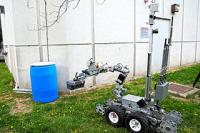
Abandoned items of luggage are frequently found at airports and train stations. This is a case for the emergency services, which have to assume that these items might contain bombs. They must assess the potential threat quickly, avert any possible danger, and preserve evidence for criminal proceedings. In the future, police will have the support of a remote-controlled sensor system as they go about their duties. Researchers are developing this sensor suite in cooperation with industry partners and criminal investigation authorities.
-
-
Forensic seismology tested on 2006 munitions depot explosion in Baghdad
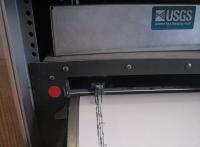
Seismometers were developed to record earthquakes, but then they turned out to be useful for monitoring nuclear tests, and now people are using them in all kinds of creative ways. Seismologists could distinguish, mortars, rockets, improvised explosive devices, helicopters, and drones from four miles away. In 2005 and 2006 ten seismometers were installed in northern and northeastern Iraq to study the seismic properties of the Earth’s crust in that area so that it would be possible to quantify the yield of nearby earthquakes or nuclear tests. They proved useful in identifying conventional explosions as well.
-
- All
- Regional
- Water
- Biometrics
- Borders/Immig
- Business
- Cybersecurity
- Detection
- Disasters
- Government
- Infrastructure
- International
- Public health
- Public Safety
- Communication interoperabillity
- Emergency services
- Emergency medical services
- Fire
- First response
- IEDs
- Law Enforcement
- Law Enforcement Technology
- Military technology
- Nonlethal weapons
- Nuclear weapons
- Personal protection equipment
- Police
- Notification /alert systems
- Situational awareness
- Weapons systems
- Sci-Tech
- Sector Reports
- Surveillance
- Transportation
Advertising & Marketing: advertise@newswirepubs.com
Editorial: editor@newswirepubs.com
General: info@newswirepubs.com
2010-2011 © News Wire Publications, LLC News Wire Publications, LLC
220 Old Country Road | Suite 200 | Mineola | New York | 11501
Permissions and Policies
Editorial: editor@newswirepubs.com
General: info@newswirepubs.com
2010-2011 © News Wire Publications, LLC News Wire Publications, LLC
220 Old Country Road | Suite 200 | Mineola | New York | 11501
Permissions and Policies
